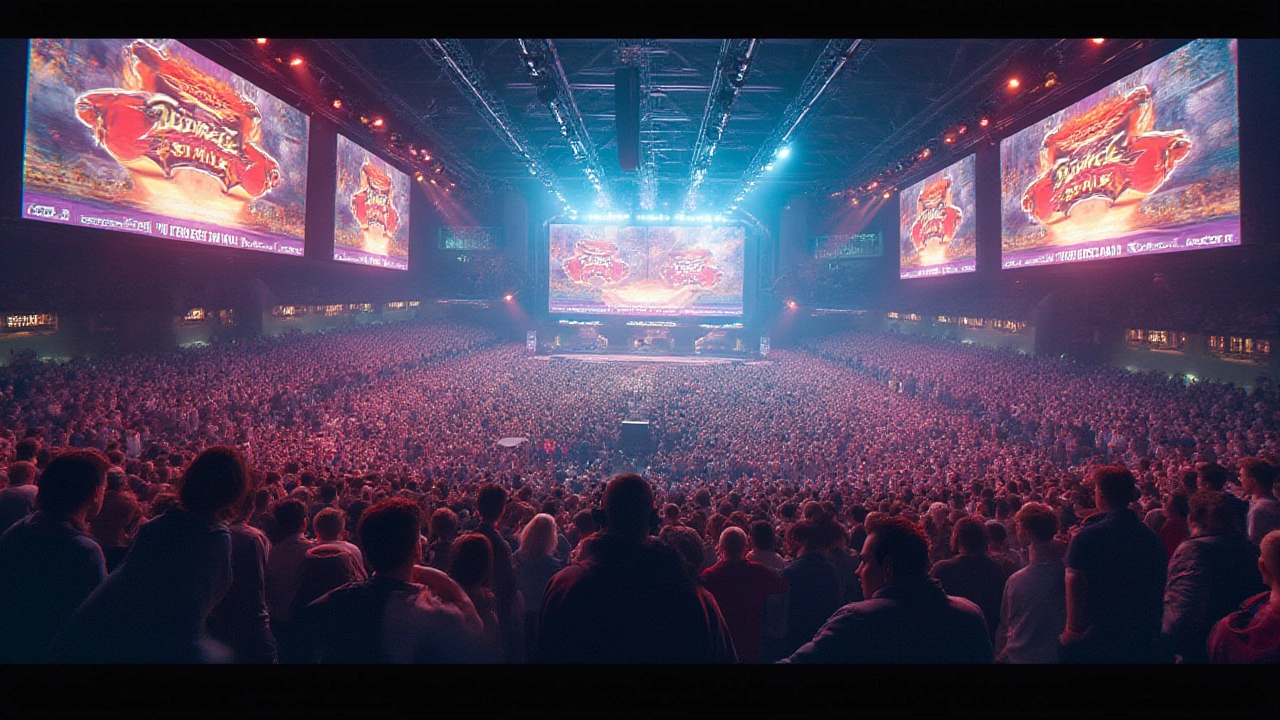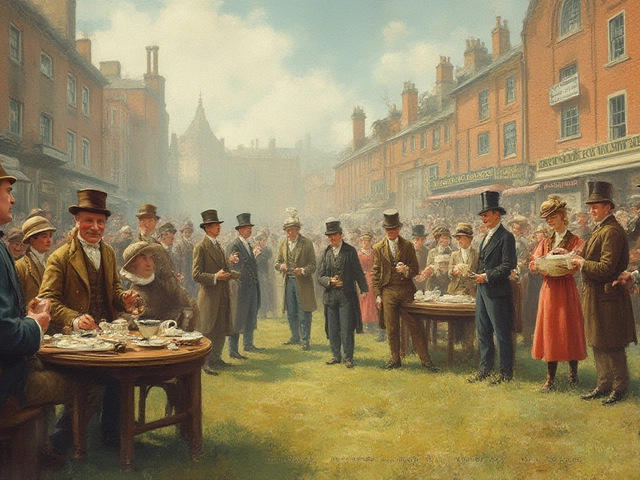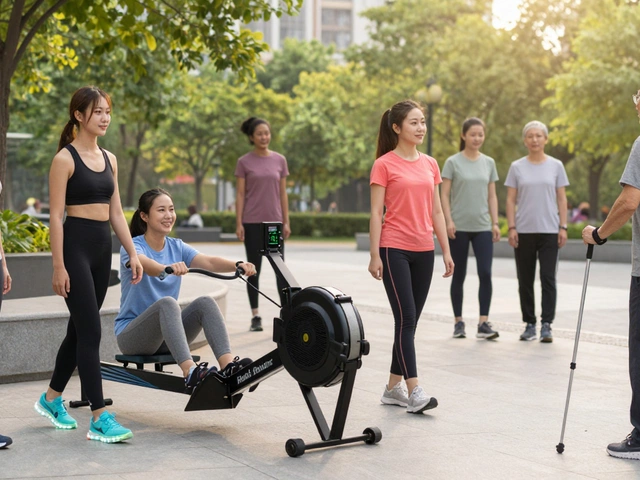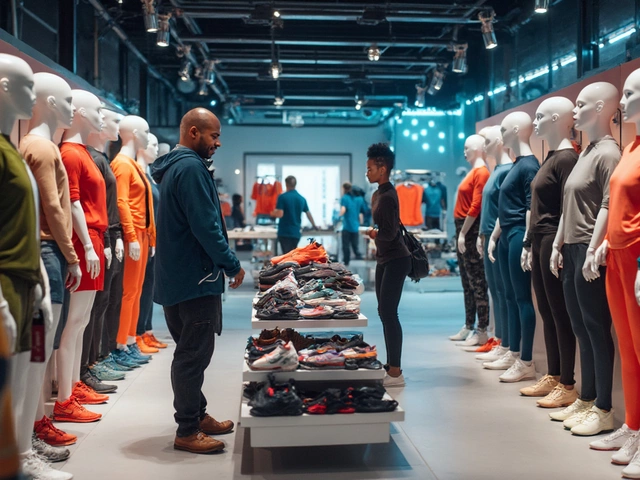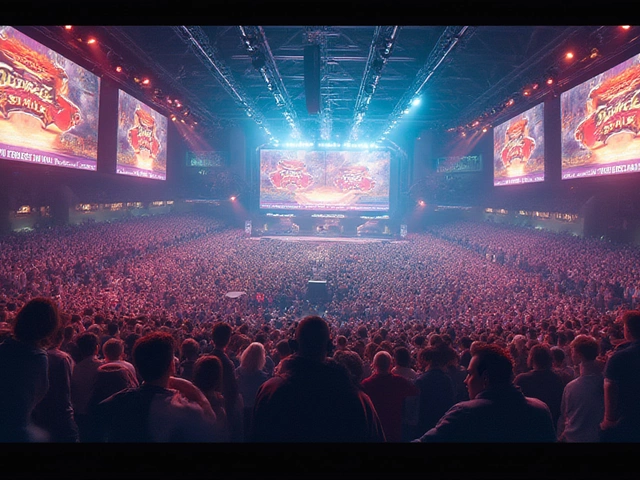Arguing about the best fighting game isn’t like picking your favorite pizza topping—it’s a debate that splits the internet, skills, and friendships like nothing else. Yet, when you look at tournaments, crowds, esports money, and lasting legacy, one game still floats to the top like a well-timed uppercut. Whether you’re new to the scene or have spent childhood summers in sweaty arcades, the question tugs at you: What is the #1 fighting game, and why won’t it step down?
The History and Evolution of Fighting Games
When you turn the clock back to the late '80s and early '90s, fighting games exploded onto the scene. "Street Fighter II" carved out a place in arcade history in 1991. It didn’t just launch a genre—it cranked it up with combos, special moves, and the introduction of competitive tournaments. Remember the lines at the arcade cabinets? People used to scrounge for quarters just to challenge their friends and strangers. That feeling of sweaty palms and arcade stick clicks set the stage for every fighting game to follow.
As years passed, the fighting game world split: some picked up the gritty realism and flashy finishers of "Mortal Kombat"—remember its infamous 1993 controversy and congressional hearings?—while others hooked onto the technical depth of "Tekken" or speed of "Guilty Gear." Each launched its own loyal fanbase. “Smash Bros.” even flipped the script with a party vibe, letting Mario toss Pikachu off a ledge for laugh-out-loud chaos. Rock-paper-scissors, zoning, mind games—these got baked into the DNA, keeping every fight fresh.
But "Street Fighter" kept pushing. When esports became a real profession, the game found new life in tournaments like EVO. The controls stayed simple yet deep, welcoming casuals but rewarding mastery. “Street Fighter III: Third Strike” gave parrying its famous EVO Moment #37 in 2004—a viral highlight where Daigo Umehara parried Justin Wong’s Super Art. That single second cemented fighting games as a high-stakes battlefield of wits, speed, and nerve.
Now in 2025, major esports leagues and smaller grassroots tournaments still rely on the same classics, albeit with new tech and bigger prize pools. New games come out every year, but only a handful stick around. Developers learned: quick updates and great netcode (look up rollback netcode if you want communities to thrive) matter as much as how many characters or stages you offer. As gaming drifted online, good netplay became essential. "Street Fighter 6" nailed this, finally closing the gap between offline and online play.
The history isn’t just about characters or fireballs. It’s about communities and rivalries, heart-racing comebacks, and learning something new every match. That’s what keeps fighting games, especially the big dogs, always in the conversation for the #1 spot.
Why Street Fighter Still Holds the Crown
Let’s get real: you can’t talk about the world’s greatest fighting game and ignore "Street Fighter." Sure, there’s "Tekken 8", "Smash Ultimate", "King of Fighters XV", and fan favorites like "Dragon Ball FighterZ" or "Mortal Kombat 1." But go to any big event—EVO Las Vegas, CEO Florida, or the Capcom Pro Tour global finals—and you’ll see one logo in every bracket’s heart: Street Fighter.
What makes it so unbeatable? It’s the balance between accessible basics and jaw-dropping skill ceiling. “Street Fighter” is easy to pick up: six buttons, a handful of special motions, and characters with clear strengths. Yet, hit Diamond rank or step into a crowded tournament room, and you’ll face mind games deeper than chess. Top players like Tokido, Daigo, Punk, and MenaRD can make simple moves feel impossible to counter.
During lockdown years, Capcom doubled down on netcode fixes, content drops, and teaching tools. "Street Fighter 6," as of 2025, bridges the old and new. The visuals pop, the cast is diverse, and most importantly—the netplay is smooth for nearly everyone. The combo trials teach beginners, while Fight Lounge lobbies (where players spectate, chat, or fight) make online feel social, almost arcade-like. It didn’t hurt when Capcom offered the biggest prize pool in history for the 2023 Capcom Cup: a single tournament winner took home $1 million. Even years down the line, that draw kept new blood coming in.
Modding, content creation, and shareable clips drove more engagement than ever. Twitch and YouTube lit up with highlight reels, tutorials, and goofy combo videos. Pro players didn’t just chase money—they became personalities. You don’t have to be a pro to join the show. Twitter debates about balance, costumes, and tier lists keep things spicy all year round.
But the magic ingredient is community. Whether you’re grinding ranked at home, playing locals in a cramped café, or flying to majors, everyone shares stories—last-second wins and crushing defeats. Newcomers are welcomed and (mostly) helped, so no one has to slog through trial-and-error alone. Street Fighter stays #1 because it belongs to everyone, not just the gatekeepers or the esports elite.

The Esports Factor and Global Influence
You can’t argue a fighting game's greatness without talking money, crowds, and fame. "Street Fighter" has been headline material since the word "esports" meant renting a community hall and pulling CRT televisions from someone’s dad’s garage. As the Capcom Pro Tour grew, so did sponsorships, world-class venues, and production values rivaling traditional sports. Match commentary, slow-motion replays, and massive crowds waving flags—there’s a real sense of spectacle.
The fighting game community (FGC) prides itself on inclusivity. Anyone with a console or a PC can enter online qualifiers. No big franchise buy-ins or leagues cutting off upstart talent. This open door let stories like MenaRD (winning Capcom Cup from the Dominican Republic) or Luffy (taking EVO with a PlayStation controller, not a fight stick) shine. The storylines turn ordinary folks into legends.
Tournaments now span Asia, North America, South America, Europe, and the Middle East. Fans from Brazil to Japan get their local heroes, regional rivalries, and unique playstyles. The FGC isn’t just loud online—they travel together, party hard, and swap tech late into the night. If you want to raise your game, you can join online Discords, hop into "Street Fighter"’s lobby matchmaking, or even stream your journey—there’s always someone out there willing to spar or coach for free.
Let’s not ignore the side effect: Street Fighter’s influence seeps into other games and gaming culture. When Capcom leaned into accessibility, "modern" controls opened up the door for absolute beginners. Instead of complex quarter-circles, newer players mash single buttons, learning movement and timing first. This model inspired rivals—Mortal Kombat and Tekken both rolled out beginner-friendly features. The old walls around the FGC started to drop away.
And if you dream of going pro, there’s a real roadmap now. From high school and college esports to sponsored teams, constant content, and worldwide leaderboards, you don’t have to guess where to start. Watch replays, analyze pro matches—study why Daigo blocks in one direction after a knockdown or how Punk whiff punishes with pinpoint precision. Deep-dive analysis is easy to find and fun to watch.
Tactics, Tips, and What Sets the #1 Apart
Here’s what separates "Street Fighter" (and other enduring fighters) from the pack: the tiny details in every round. Success is about reading your rival, adapting on the fly, and stringing together split-second moves with the calm of a poker champion. If you want to stand out, here’s what counts.
Fighting games have what the FGC calls “neutral”—the dance before the first punch. Street Fighter rewards careful spacing, footsies (baiting and punishing whiffs), and learning how your character handles pressure versus retreat. Don’t just memorize combos. Study your opponent: do they jump at every chance, freeze on defense, or love to spam the same special? Adjust mid-match and throw out feints to see what bites.
When starting, pick a main character you like aesthetically and mechanically. Ryu is classic for learning fundamentals: fireballs, uppercuts, and patience. For something trickier, try Juri or Luke—no one says you have to pick the most popular. Spend time in training mode, practicing not just long combos but pokes, anti-airs, and block timings. Short session daily beats marathon grinds—your fingers and brain will thank you.
Watch pro matches for new tactics. Not just the flashy combos but how pros adapt in real time. Pause replays before major swings and ask yourself why they picked that move. Did they see a weakness or just take a gamble? You’ll learn more breaking down a Daigo replay than spamming arcade mode for a week.
Online play can be rough—lag spikes and losing streaks test every player. Keep a small notebook, or phone notes, tracking your setbacks: Do you panic under pressure? Miss anti-airs? Overuse predictable moves? Set mini-goals (“I’ll land this combo once in a real match” or “I’ll block three jump-ins today”). Celebrate the small gains, or you’ll burn out.
One last tip: join communities. Reddit’s r/StreetFighter, Discords, or local Facebook groups—ask questions, share clips, join weekly tournaments. Players love to help someone putting in effort. You’ll soon find rivals at your level and, as you climb, newcomers to help in turn. That’s how "Street Fighter" (and every legit #1 fighting game) keeps raising the bar.
